Quest for Progress
Uponor Convention 2018 speaks to the future of plumbing and construction.
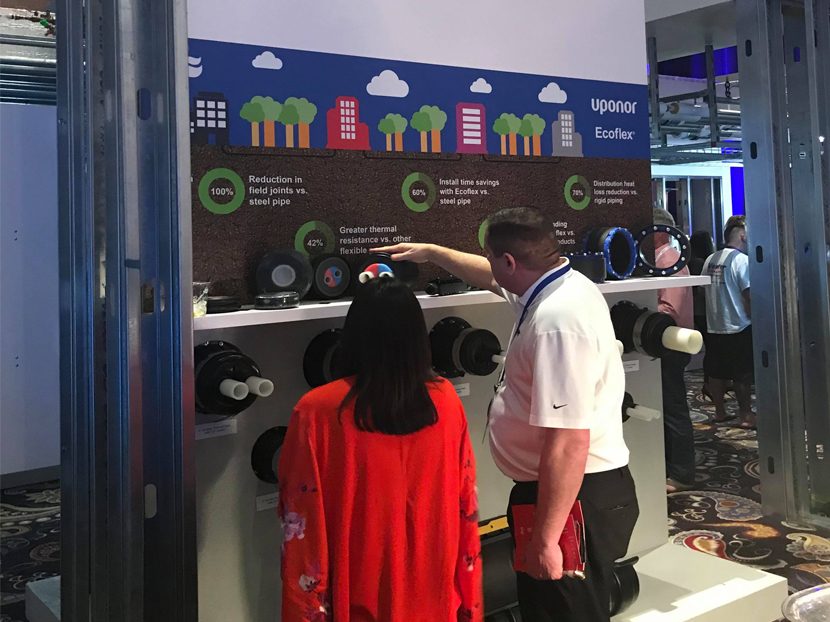
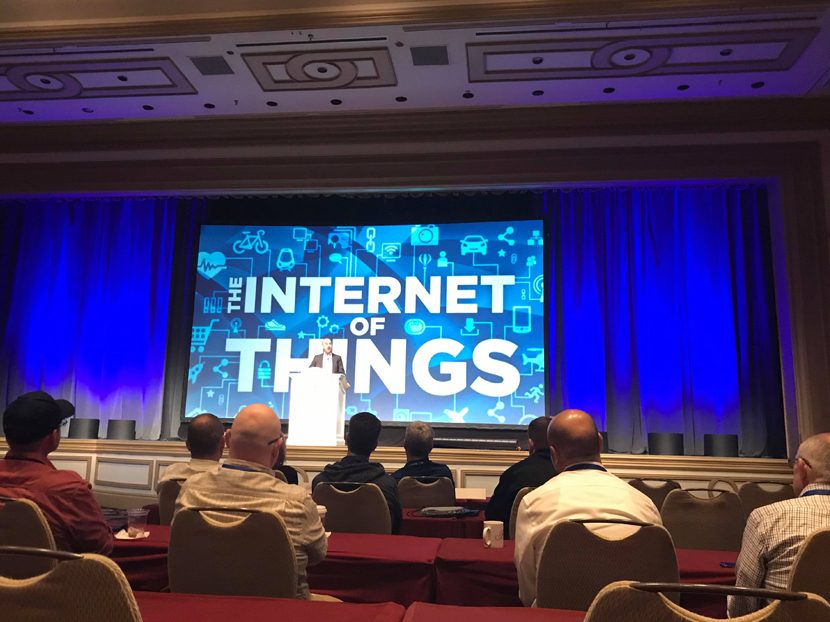
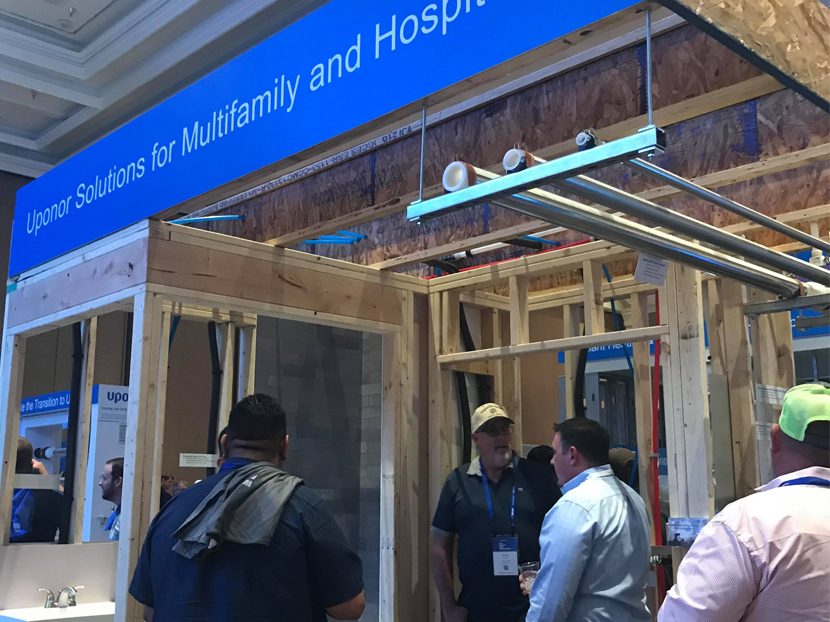
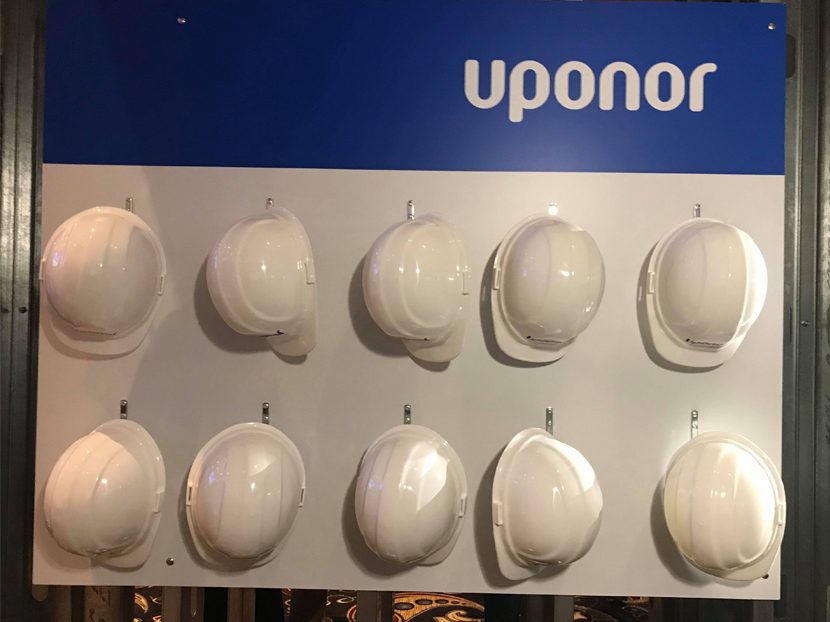
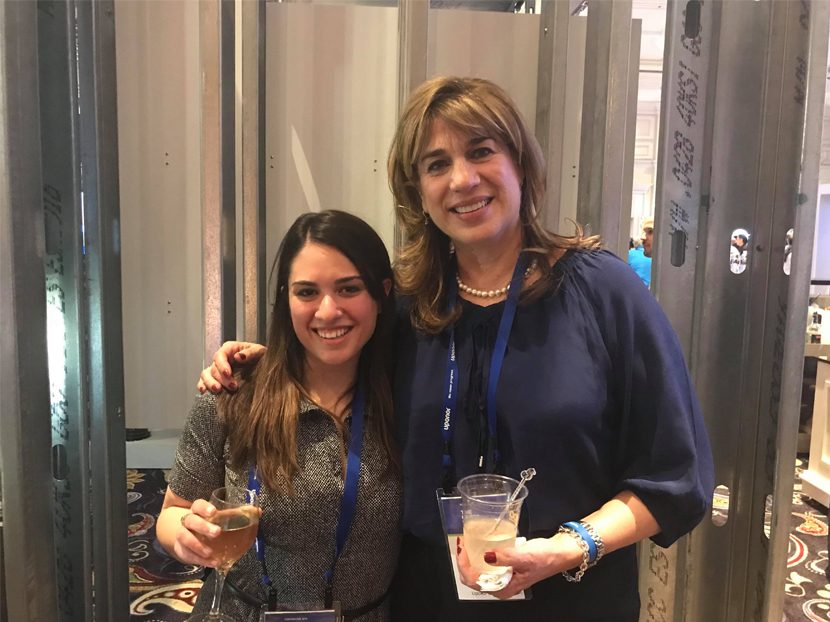
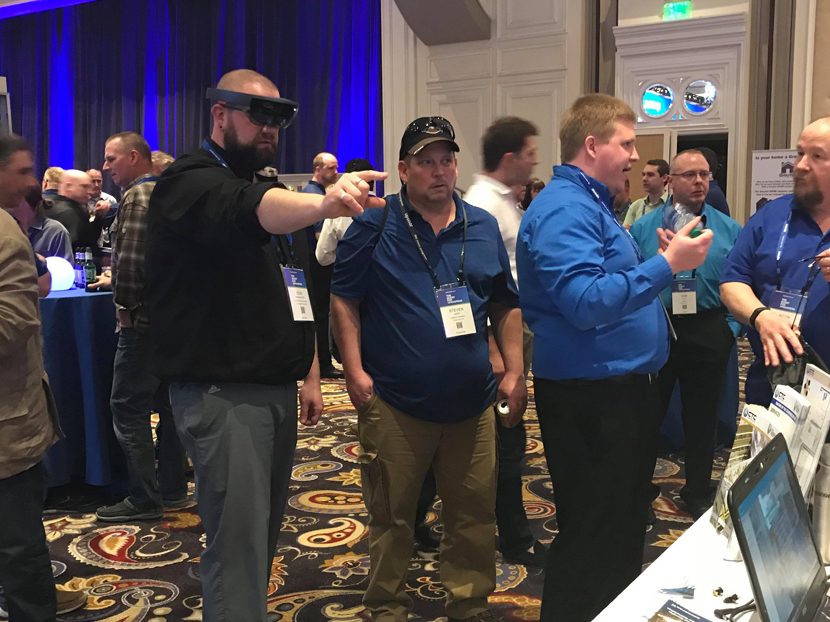
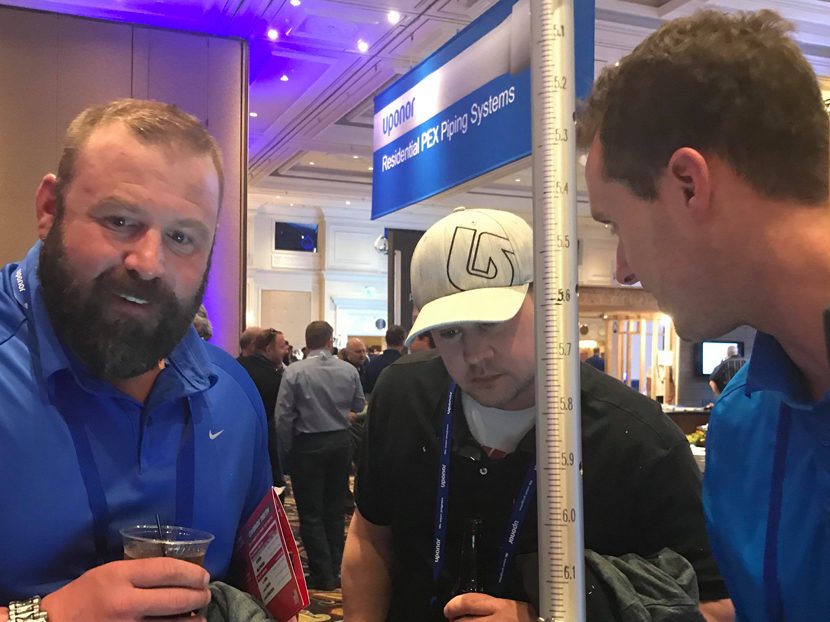
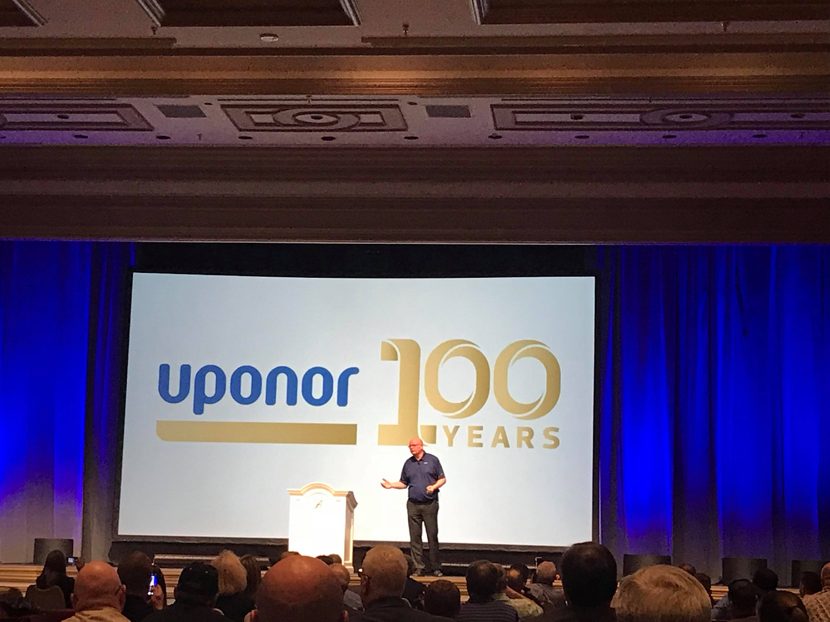
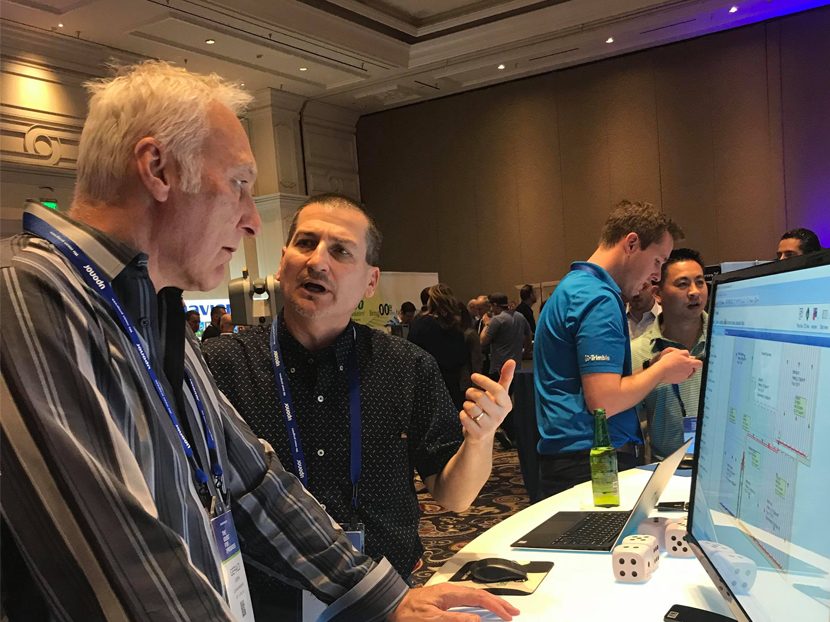
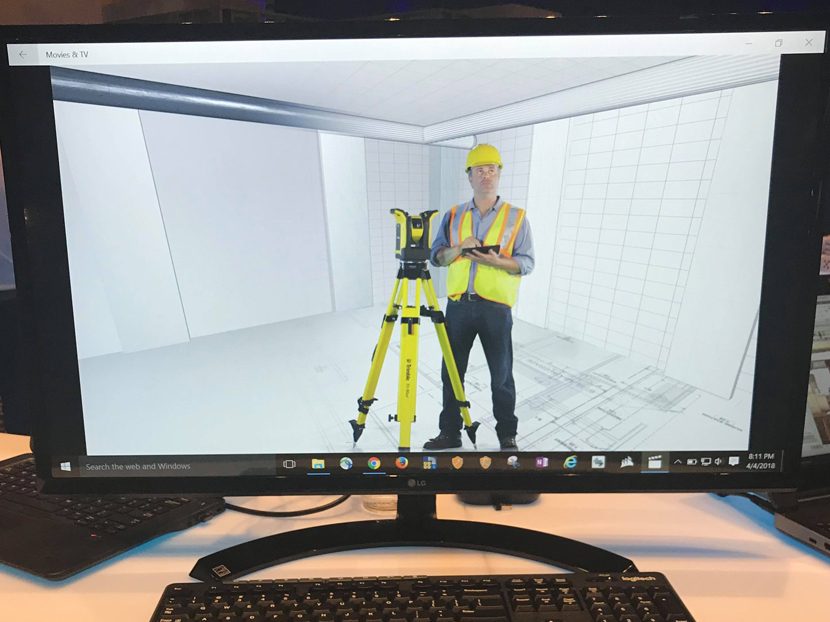
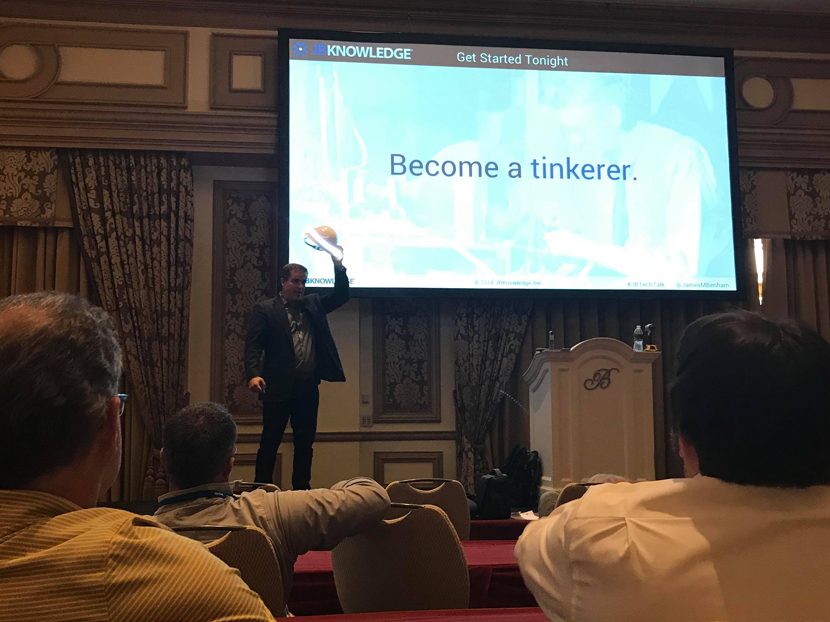













Futurists, improvisation, poetry — Uponor had a few surprises up its sleeve during the 2018 Convention, held April 4-6 in Las Vegas’ Bellagio. The event was a hard-hitting, eye-opening call to our industry’s businesses of the future. The theme, “Quest for Progress,” was a reflection of Uponor’s dedication to “educating plumbing and construction professionals, advocating on behalf of the industry to help set codes and standards, and innovating smart solutions that help relieve pain points and build businesses.”
The convention welcomed over 1,200 people this year, including wholesaler-distributors, home builders, specifying engineers, plumbing and mechanical contractors, Uponor team members, independent sales agents and media from the U.S. and Canada. Uponor’s very first convention, held in March 2000, was a customer-appreciation event for a couple hundred residential radiant installers. It has since grown into one of the industry’s largest networking, educational and advocacy events for professionals who install, design and specify PEX in the residential and commercial building markets.
A juggling act is probably a good way to kick off a disruptive, innovative PEX event in Las Vegas, and Uponor delivered. The Passing Zone featured comedy duo, Jon Wee and Owen Morse, who juggled everything from bowling ball pins to, you know, chainsaws. No big deal. Their act was meant to get attendees to reexamine the way they approach their roles and businesses by illustrating key principles of success — innovation, collaboration and execution — in juggling form.
The general session ended on a high note, as famished attendees made their way over to the Grand Ballroom for sliders, custom-printed t-shirts, conversation and a walk through PEX lane. The Product Showcase featured over 20,000 square feet of plumbing, radiant heating/cooling, hydronic piping and pre-insulated piping systems for residential and commercial applications. Some highly interactive displays included the award-winning Phyn Plus display from the Consumer Electronics Show, an Uponor Pro Squad patio where attendees could meet Richard Trethewey from This Old House and even a science station.
It doesn’t end there. Hard hat arrangements, BIM displayed on computers, live PEX expansion demonstrations were just a few elements that the Uponor played around with and incorporated into the showcase, which also featured the following vendor-partners: Avenir, CTC, Greyter, Grundfos, Milwaukee Tool, Navien, PCL, Rinnai, RR Donnelley, Taco Comfort Solutions, ThomasNet and Trimble.
The day following the product showcase was packed with forward-thinkers and futuristic technology. The keynote speech was headed by “future man” Jack Uldrich, speaker and author, who discussed ways businesses can prepare for the unpredictable, and how to embrace uncertainty in the digital age, “Business leaders of the future are going to be those who embrace change and understand how powerful it is and how soon it’s going to be here.”
Uldrich hit on some emerging technologies, such as 3D printing in the construction industry, explaining how many of them will double ten times in the coming decade. The idea behind “exponential growth,” Ulrich says, is that it will “violate our expectations of the future. We are used to living in linear times, but now we’re living in exponential times.” He pointed to examples like Netflix and Uber and how these innovations worked because they operate exponentially.
Uldrich says that there are so many changes happening at once, that we’re probably missing a good amount of them, even when they’re in our faces. He offered three principles that will help with embracing simultaneous change: awareness, humility and action. “Things you learned about your business yesterday are not necessarily true today,” he concluded.
After an inspiring opening session, attendees attended various breakout sessions. Some of the topics included: smart homes solutions for residential applications, 3D modeling for PEX piping, pre-construction, sustainable building trends, addressing the labor shortage and more. PHC News attended Milwaukee Tool’s “Increasing Productivity Through Innovation,” “Designing for a Manufactured World,” “Winning in Multifamily and Hospitality: Case Studies and Lessons Learned,” and “Construction Disruption: Be ready for the technology of tomorrow.”
Milwaukee Tool: Increasing Productivity Through Innovation
Milwaukee continues to follow its obsession of understanding user challenges. The company was in full gear during the Product Showcase, and even had a chance to reminisce about its Uponor partnership, which started back in 2010.
Milwaukee lined up a full arsenal of innovative solutions during a morning breakout session. Alex Boll, senior product manager at Milwaukee Tool, kicked off the morning with lighting, draining cleaning and integrative smart solutions. The smart solutions portion included a ONE-KEY update and how the digital platform has prevented tool theft loss and increased user customization, and will continue to enhance its performance. With every tool that’s added, One-Key’s capability expands.
Milwaukee Tool also announced that it’s looking to venture further into the repair/maintain space by 2020.
Winning in Multifamily and Hospitality: Case Studies and Lessons Learned
Uponor sales team members Paul McColloch and Andrew Cahill presented some of Uponor’s most recent successes in the multifamily and hospitality arenas. The Cavalier Hotel in Virginia was the first project they discussed. The building, completed in 1924, is one of the largest brick projects in Virginia. JRC Mechanical’s Nathan Berryman led the project, which included 15,000 linear feet of Uponor AquaPEX. Some obstacles on this project included a 24-inch crawlspace and an irreplaceable ceiling. Berryman commended the relationship with Uponor during the project, “It was important for us to have a partner that was focused on relationship-building and seeing a project all the way through.”
Another project that was discussed was the Millwork Lofts in Minneapolis, Minnesota. The project, which was built in 1928, featured 40,000 feet of piping for both domestic water and hydronic piping. The HVAC contractor on scene was Wenzel Plumbing and Heating. Pipefitter Stephen Vieau discussed some of the trickier and more delicate parts of the project, including exposed piping and how the pipe support and relationship with Uponor was crucial to the project’s high caliber results.
Get in Control: Project Management Tactics For Mechanical Contractors
PCL Construction Services Inc.’s Michael G. Headrick, vice president, and Blas Blas Bigotti, project manager, discussed how Design for Manufacture and Assembly (DFMA) is changing the industry and what that means for mechanical contractors.
Currently, PCL is working on three separate billion dollar projects. They specialize in PEX projects and have some notable ones to name including the Minnesota Zoo, Atlantis in the Bahamas, a cancer center in Melbourne, Australia and even The Wizarding World of Harry Potter (California and Florida locations). PCL was also responsible for Uponor’s most recent expansion in Apple Valley, Minnesota. In total, PCL has lead nine expansions for Uponor.
PCL discussed what clients expect in the planning stages of a project. “For some of these very large projects, it can take up to two years in the preconstruction phase. And, without key subcontractors helping us, a project ends up being not as high quality as you’d expect,” Headrick said.
Most of the work PCL sees is in the Construction Management sector, where design and construction overlap. They take a private-public partnership (P3) approach, where they are upfront about pricing and all design aspects. This is why having the right teammates through the entire project is crucial from the beginning. PCL often brings subcontractors in-house to work with them through modular components. For example, on one hospital project, mechanical and electrical subcontractors came into the factory and performed work, staging bathrooms before they were shipped out. By the time the modules were ready to be shipped out, they were in operable condition.
Some other topics they covered were:
• Component-based pricing
• 3D scanning, which is becoming more of a requirement on many projects
• Waste management — clean, not to mention, safe jobsites
• Working with inspectors
• Mechanical racking
“We’re not looking to take work away from the mechanical contractor, but we’re looking to partner much earlier on than we have in the past,” Headrick said.
Construction Disruption: Be Ready for the Technology of Tomorrow
James Benham, CEO of JBKnowledge Inc., leads JBKnowledge, a premier provider of technology solutions for the construction and insurance industries. Benham said, “Of all industries construction is the only one where productivity over a 30-year period has actually declined.”
Benham points to the amount of mistakes that are preventable in construction and how current tech can help companies save big. Benham sited how Uber combated their traffic issue when it first rolled out Uber Pool, which allows for ride sharing. In a San Francisco analysis, Uber noted a ten percent reduction in traffic.
“It’s staggering what you can do with big data. And we can do it in construction, too,” Benham said.
Benham echoed what a lot of other speakers at the conference voiced — that criticism and fear of change prevents us from moving forward.
“Machines have been taking our jobs since the invention of the wheel,” he said. “Think about it. Every single tool that every single person ever invented eliminated a task that a human was doing. And then the people who were doing that task were angry. Machines aren’t taking our jobs; we are shaping them to do the things we don’t like doing, so we can do other things.”
Here are some of the construction technologies that Benham touched on:
• CaptionBot – Microsoft developed an artificial intelligence (AI) system capable of analyzing and describing pictures automatically. Users can upload any image to CaptionBot, and have it return a description in seconds.
• SmartBid – SmartBid is the leading construction bid management software for general contractors worldwide. With the SmartBid general contractor software, GCs can access a web-based and mobile platform to streamline their bid project data, documents and subcontractor communications during preconstruction.
• AutoDesk Revit – BIM software includes features for architectural design, MEP and structural engineering and construction. Revit supports a multidiscipline, collaborative design process.
• Dynamo – Open-source platform for computational design and building information modeling (BIM).
• Katerra – Applying systems approaches to remove unnecessary time and costs from building development, design and construction.
• ALICE – ALICE uses artificial intelligence to help you generate and explore millions of fully resource-loaded 4D construction schedules in a little as a day — using just a 3D model.
• PlanGrid – Build and collaborate from anywhere with real-time access to plans, punch lists, documents and daily reports.
• Autodesk Forge – Forge is an application program interface (API) platform and supporting materials (sample code, manuals) as well as a community of developers who uses those APIs.
• Project Atlas – Turning project files into a zoomable, clickable map. Use GPS, search and voice.
Closing session: Poetry and improv, oh my
John Sweeney, event MC and closing session keynote speaker, implored attendees to think outside ourselves and the roles we play. Sweeney, who was raised on a farm near Madison, Wisconsin, began his career as a corporate real estate consultant, eventually giving it up to help change lives through comedy. He started the Brave New Workshop, where he uses improvisation to teach businesses how to overcome business challenges. His client list includes big wigs like Microsoft, Target and Medtronic.
A Brave New Workshop’s common practices emphasize the desire to change, getting comfortable with being uncomfortable and an attitude of service, which Sweeney hit on during the closing session. Then he swayed attendees to play a word association game. The crowd broke into groups and each member came up with five things from various categories (U.S. states, countries in Europe, books, types of cars) when prompted. It was soon discovered that we all went with answers that felt like the safest options to say in a group setting, because, surprise, people tend to say things that are socially acceptable and “safe.” What we can do in the future, Sweeney says, is to think outside the box, especially when we are dared to think along the lines of innovation.
Other closing sweet spots included the announcement of the winners of two big prizes, a trip to Paris and a complete Milwaukee Tool plumbing kit (nice!); and a whimsical tribute to the industry from Uponor’s Ingrid Mattsson, director of Brand Management, closet wordsmith, and the person President Bill Gray called, “the heart and soul of Uponor.”
“We mean progress as a possible notion where we build a brand through education and innovation. We’ll create a commotion. More than ever, we’ll take a stand, lend a hand, prepare a plan to make progress in things like water, energy and labor where we can,” Mattsson rapped. “Let’s elevate the Uponor brand beyond piping called PEX to something, dare I say, even better than sex.”
Better than sex, yes, you heard that right.
In any case, Mattsson highlighted something that Uponor excels at — and that’s seeing the industry in a unique a light. This perspective takes a touch of creativity, disruption and of course building relationships with customers that stand the test of time. Time that, thanks to our digital age, is moving very fast.
“Thank you, gracias, merci, for your business, partnership and passion we see,” Mattsson said.
President and CEO Jyri Luomakoski voiced a similar wave of gratitude. “Thank you for entrusting your business to us,” he said.




